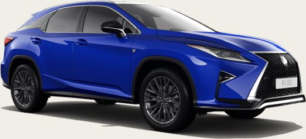Previous generations of Prado were never atrocious on road, but there was always substantial body roll, it was a bit floaty and it was one of those four-wheel drive wagons that, on sealed surfaces, tended to feel like a couch on wheels.
That’s no longer the case because this new-generation Prado is well controlled, well composed in all scenarios and it really is nice to drive – even when you move from bitumen onto a dirt track and you can still keep up a fair bit of speed.
On the new chassis the Prado feels settled, nicely controlled and that well-weighted steering has an even balance to it, especially when things become a little bit lumpy and bumpy here and there.
And most of that ol’ Prado body roll that was evident in previous iterations has been ironed out.
Past generations of Prados weren't ordinary in the off-road department, not by a long shot. And this new Prado has improved on the proven formula of those previous generations: from its mechanical foundations, plenty of low-down torque through to its selectable driving modes (rock, sand, mud), the Prado is well equipped to tackle pretty much any off-road circumstance you can conjure with your over-active imagination.
Now, with the added bonus of new and improved suspension and a sway bar disconnect system, those factors have bolstered the vehicle skill-set that's already there.
There is plenty of driver visibility through the cabin to the front, to the sides and to the rear. So you can see everything. But as well as that, you also have the valuable addition of new driver-assist technology, including the multi terrain monitor camera system to make sure you can scrutinise any sight lines that you may not be able to see naturally from the driver's.
The steering feels sharp, it's well weighted and balanced and with a longer wheelbase on this chassis the Prado’s body always feels controlled and composed on fast dirt roads or through low-speed four-wheel-driving situations.
The eight-speed automatic transmission is very clever and works well in conjunction with the aforementioned selectable driving modes, which tweak engine output, transmission response and throttle control.
The Altitude is the most off-road-focused of the line-up and to that end it has a centre diff lock, rear diff lock and swaybar disconnect system – and all those elements add up to a nice bonus for a vehicle that has always been a decent off-road tourer.
So it has plenty going for it, but it’s not all good news though.
Toyota reckons it's V-Active system is aimed at fuel consumption but it also helps to produce a little more torque in off-road situations during which you may need extra torque.
But I've seen no real discernible difference in terms of performance, at those low speeds coming from that unit. It may be so seamless that you don't notice it at all, but I've only noticed that the Prado has performed as it should with that engine and that transmission on board.
I can't credit any improvements in performance to that 48 volt unit that's now on board.
The Prado is compromised by ground clearance and off-road angles that are more suited to a city-friendly vehicle than a purpose-built off-road vehicle.
Having said that, ground clearance is fairly standard for a large four-wheel-drive wagon – it sits at a listed 221mm off the dirt, which is satisfactory – and it has a wading depth of about 700mm.
The off-road angles of approach (32 degrees) and departure (17 degrees) are also standard for this class and size of vehicle, although especially in this Altitude, the departure angle has been somewhat compromised because of the underslung tyre and the addition of optional accessories (towing kit etc) on this text vehicle.
The Prado’s ramp-over angle is not listed but this new-generation Prado, with its longer 300 Series-size wheelbase, likely offers about 21 degrees.
The underbody does at times feel quite low and vulnerable to hitting the ground, even though underbody protection is quite substantial.
It's Toyo Tires Open Country A/T (all-terrain) tyres (265/70R18 116H) are perfectly fine for most off-road scenarios, but you can always do more and go further with a set of better, more aggressive all-terrain tyres, especially some light-truck construction rubber.
It's bulky sidesteps, while handy for getting in and out of the vehicle itself, can also be considered vulnerable to damage – and are prone to rubbing against rocks through tight rutted climbs, that sort of thing.
But those aspects aren't deal-breakers, and a lot of the Prado’s shortcomings – ground clearance, off-road angles, tyres – can be easily resolved with a visit to Australia's aftermarket industry.
And despite those minor niggles I did have a lot of fun driving this Prado.
For those looking to use their Prado as a towing platform, the good news is it can now legally tow the segment standard maximum of 3500kg (braked) (up from the previous generation's 3000kg) and it has a pre-wired and integrated towbar.
Payload is listed as 580kg, GVM is 3100kg, and GCM is 6600kg.

